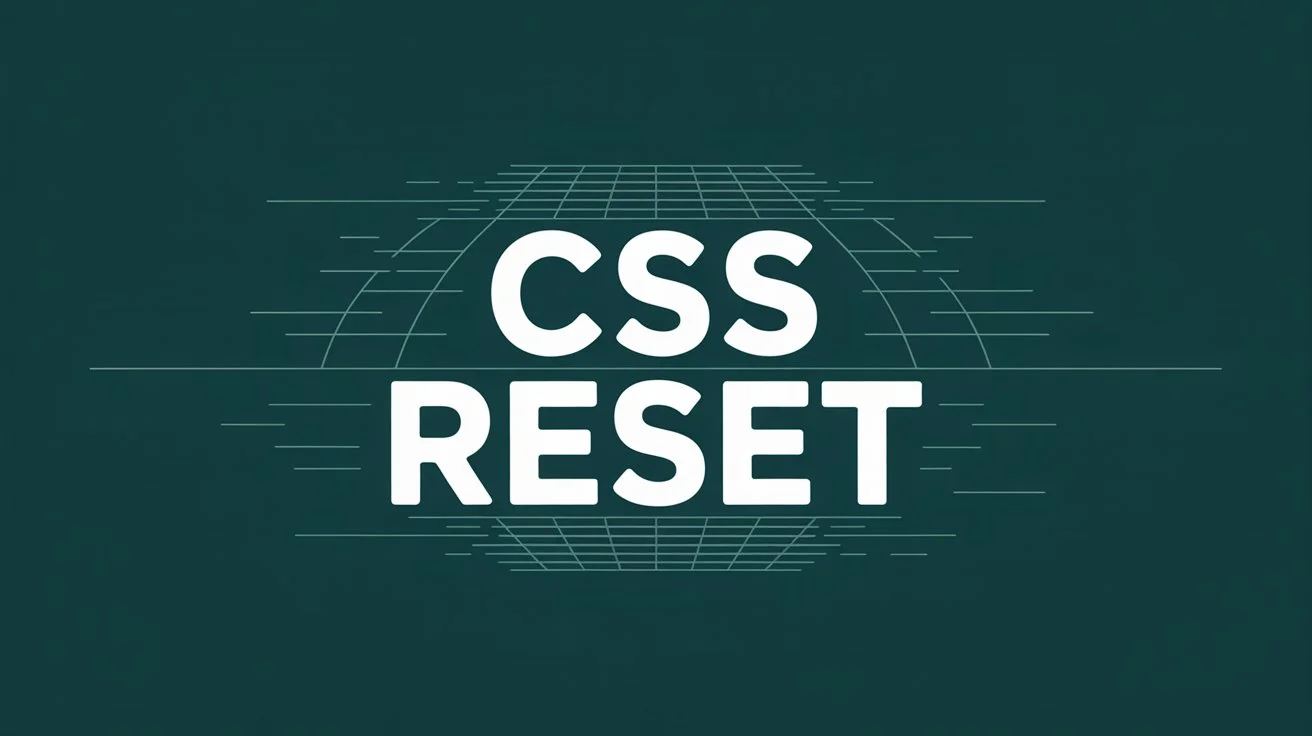The Rise of Utility-First CSS Frameworks
In recent years, utility-first CSS frameworks have revolutionized how we build web interfaces. Tailwind CSS has been at the forefront of this movement, popularizing the approach of using small, single-purpose utility classes to build custom designs. However, while Tailwind is excellent, it's not the only game in town. Axentix offers a compelling alternative that combines the best of utility-first design with something Tailwind doesn't provide: ready-to-use, customizable components.
If you've been using Tailwind CSS and love its utility-first approach but sometimes wish you had pre-built components to speed up development, Axentix might be exactly what you're looking for. It gives you the flexibility of utility classes while providing a comprehensive component library that you can customize to match your design system.
What Makes Axentix Different from Tailwind?
At first glance, Axentix and Tailwind might seem similar – both are utility-first CSS frameworks that help you build interfaces quickly. But Axentix takes a different approach that addresses some of the pain points developers face with pure utility frameworks.
Utility Classes + Components
While Tailwind focuses purely on utility classes, Axentix combines utility-first design with a comprehensive component library. This means you get the speed and flexibility of utility classes, plus the convenience of pre-built components that you can customize using those same utility classes.
For example, instead of building a modal from scratch with utility classes, you can use Axentix's modal component and then customize it with utility classes to match your design:
<!-- Axentix Modal with utility class customization -->
<button class="btn btn-primary" data-ax="modal" data-target="#myModal">
Open Modal
</button>
<div class="modal shadow-2 rounded-3" id="myModal">
<div class="modal-header bg-primary text-white">
<h5 class="modal-title">Custom Modal</h5>
<button class="btn-close" data-close="modal"></button>
</div>
<div class="modal-body p-4">
<p class="text-grey-dark-1">This modal uses utility classes for styling</p>
</div>
</div>
CSS Grid Instead of Flexbox
One of the most significant differences is that Axentix uses CSS Grid for its layout system (Grix), while Tailwind primarily relies on Flexbox. CSS Grid provides more powerful two-dimensional layout capabilities, making it easier to create complex layouts without the nested divs that Flexbox sometimes requires.
Smaller Bundle Size
Axentix is designed to be lightweight. While Tailwind can generate large CSS files (especially if you don't purge unused styles), Axentix provides a more curated set of utilities and components, resulting in smaller bundle sizes out of the box.
The Axentix Component Library
One of Axentix's biggest advantages is its comprehensive component library. Instead of building everything from scratch with utility classes, you get 25+ pre-built components that you can customize to your heart's content.
What Components Are Available?
Axentix includes a wide range of components that cover most common UI patterns:
- Navigation: Navbar, Sidenav, Breadcrumb, Pagination
- Content: Cards, Alerts, Modals, Lightbox, Carousel
- Forms: Inputs, Selects, Checkboxes, Switches, File uploads
- Feedback: Loading spinners, Toasts, Tooltips
- Layout: Grix grid system, Collapsible sections
Each component is built with utility classes under the hood, which means you can easily customize them using the same utility system. This gives you the best of both worlds: the speed of pre-built components and the flexibility of utility-first design.
Customizing Components with Utility Classes
Here's how you can customize Axentix components using utility classes:
<!-- Default Axentix button -->
<button class="btn btn-primary">Default Button</button>
<!-- Customized with utility classes -->
<button class="btn btn-primary rounded-2 shadow-3 hover-shadow-4 transition-all">
Custom Button
</button>
<!-- Custom card with utility classes -->
<div class="card shadow-2 rounded-3 border-2 border-primary-light-3">
<div class="card-header bg-primary-light-5 p-3">
<h3 class="text-primary-dark-2 mb-0">Custom Card</h3>
</div>
<div class="card-body p-4">
<p class="text-grey-dark-1 lh-2">Content goes here</p>
</div>
</div>
Utility Classes in Axentix
Axentix provides a comprehensive set of utility classes that cover all the essential styling needs. While not as extensive as Tailwind's utility library, Axentix focuses on the most commonly used utilities, keeping the framework lightweight and focused.
Spacing Utilities
Axentix uses a consistent spacing scale that makes it easy to maintain visual rhythm:
<div class="p-1">Padding 0.25rem</div>
<div class="p-2">Padding 0.5rem</div>
<div class="p-3">Padding 1rem</div>
<div class="p-4">Padding 1.5rem</div>
<div class="p-5">Padding 3rem</div>
<div class="m-1">Margin 0.25rem</div>
<div class="m-2">Margin 0.5rem</div>
<div class="m-3">Margin 1rem</div>
<div class="m-4">Margin 1.5rem</div>
<div class="m-5">Margin 3rem</div>
Typography Utilities
Typography utilities help you control text appearance consistently:
<h1 class="font-s1">Large heading</h1>
<h2 class="font-s2">Medium heading</h2>
<p class="font-s3">Regular text</p>
<p class="text-center">Centered text</p>
<p class="text-left">Left-aligned text</p>
<p class="text-right">Right-aligned text</p>
Color Utilities
Axentix provides a comprehensive color system with semantic color names:
<div class="primary">Primary background</div>
<div class="secondary">Secondary background</div>
<div class="success">Success background</div>
<div class="warning">Warning background</div>
<div class="error">Error background</div>
<p class="text-primary">Primary text color</p>
<p class="text-grey text-dark-1">Dark grey text</p>
<p class="text-grey text-light-1">Light grey text</p>
When to Choose Axentix Over Tailwind
While both frameworks are excellent, there are specific scenarios where Axentix might be the better choice:
You Want Components + Utilities
If you love the utility-first approach but also want pre-built components to speed up development, Axentix gives you both. You don't have to choose between building everything from scratch or using a component-heavy framework.
You Prefer CSS Grid
If you're a fan of CSS Grid and want a framework that embraces it fully, Axentix's Grix system provides powerful two-dimensional layout capabilities that go beyond what Flexbox can offer.
You Need Smaller Bundle Sizes
If bundle size is a concern and you want a more curated set of utilities, Axentix provides a focused set of the most commonly needed utilities without the bloat.
You Want Built-in JavaScript Functionality
Axentix includes JavaScript functionality for components like modals, dropdowns, and carousels, eliminating the need for additional JavaScript libraries.
Getting Started with Axentix
Getting started with Axentix is straightforward. You can include it via CDN, npm, or download the files directly. Here's a quick setup:
<!DOCTYPE html>
<html lang="en">
<head>
<meta charset="UTF-8">
<meta name="viewport" content="width=device-width, initial-scale=1.0">
<title>Axentix Example</title>
<link rel="stylesheet" href="https://cdn.jsdelivr.net/npm/axentix@latest/dist/axentix.min.css">
</head>
<body>
<!-- Your content here -->
<script src="https://cdn.jsdelivr.net/npm/axentix@latest/dist/axentix.min.js"></script>
</body>
</html>
Exploring the Documentation
To get the most out of Axentix, you'll want to explore the comprehensive documentation. The documentation is organized into several key sections that will help you understand the framework's capabilities:
Components Section
The components documentation covers all 25+ pre-built components available in Axentix. Each component page includes:
- Basic usage examples
- Available customization options
- JavaScript functionality (where applicable)
- Responsive behavior
Utilities Section
The utilities documentation provides a complete reference for all utility classes, including:
- Spacing utilities (padding, margin)
- Typography utilities
- Color utilities
- Layout utilities (display, flexbox)
- Border and shadow utilities
- And much more
General Section
The general documentation covers foundational concepts like:
- Grix grid system
- Color system
- Layout examples
- JavaScript initialization
Real-World Example: Building a Dashboard
Let's look at how you might build a dashboard using Axentix's combination of components and utilities:
<!-- Dashboard Layout with Grix Grid -->
<div class="grix xs1 md2 lg3">
<!-- Stats Card -->
<div class="card shadow-2 rounded-3">
<div class="card-body p-4">
<div class="d-flex fx-space-between fx-center">
<div>
<h3 class="text-primary mb-1">1,234</h3>
<p class="text-grey-dark-1 mb-0">Total Users</p>
</div>
<div class="bg-primary-light-5 rounded-2 p-3">
<i class="fas fa-users text-primary"></i>
</div>
</div>
</div>
</div>
<!-- Recent Activity -->
<div class="card shadow-2 rounded-3">
<div class="card-header bg-secondary-light-5 p-3">
<h4 class="mb-0">Recent Activity</h4>
</div>
<div class="card-body p-0">
<div class="p-3 border-bottom">
<p class="mb-1">New user registered</p>
<small class="text-grey">2 minutes ago</small>
</div>
<div class="p-3">
<p class="mb-1">Order completed</p>
<small class="text-grey">5 minutes ago</small>
</div>
</div>
</div>
<!-- Quick Actions -->
<div class="card shadow-2 rounded-3">
<div class="card-body p-4">
<h4 class="mb-3">Quick Actions</h4>
<div class="d-flex fx-column gap-2">
<button class="btn btn-primary">Add User</button>
<button class="btn btn-secondary">View Reports</button>
<button class="btn btn-outline">Settings</button>
</div>
</div>
</div>
</div>
This example shows how you can combine Axentix's Grix grid system, card components, and utility classes to create a professional dashboard quickly. The layout is responsive, the components are customizable, and the utility classes provide fine-grained control over styling.
Migration from Tailwind
If you're currently using Tailwind CSS and considering switching to Axentix, the transition is relatively smooth. Here are some key differences to keep in mind:
Class Naming Differences
While both frameworks use utility classes, the naming conventions differ:
- Spacing: Tailwind uses
p-4, Axentix usesp-4(similar) - Colors: Tailwind uses
bg-blue-500, Axentix usesbg-primary - Typography: Tailwind uses
text-lg, Axentix usesfont-s2 - Layout: Tailwind uses
flex, Axentix usesd-flex
Component Approach
Instead of building everything with utilities, you can use Axentix's pre-built components and customize them with utilities. This can significantly speed up development for common UI patterns.
The Bottom Line
Axentix represents a compelling middle ground between pure utility frameworks like Tailwind CSS and component-heavy frameworks like Bootstrap. It gives you the speed and flexibility of utility classes while providing the convenience of pre-built components.
If you're looking for a framework that combines the best of both worlds – utility-first design with ready-to-use components – Axentix is definitely worth considering. Its CSS Grid-based layout system, comprehensive component library, and focus on customization make it a serious alternative to Tailwind CSS.
To get started, head over to the Axentix documentation and explore the components and utilities sections. You'll find everything you need to build modern, responsive web interfaces with the speed and flexibility you're looking for.
Whether you're building a simple landing page or a complex web application, Axentix provides the tools you need to create beautiful, maintainable interfaces that stand out in today's competitive digital landscape.



